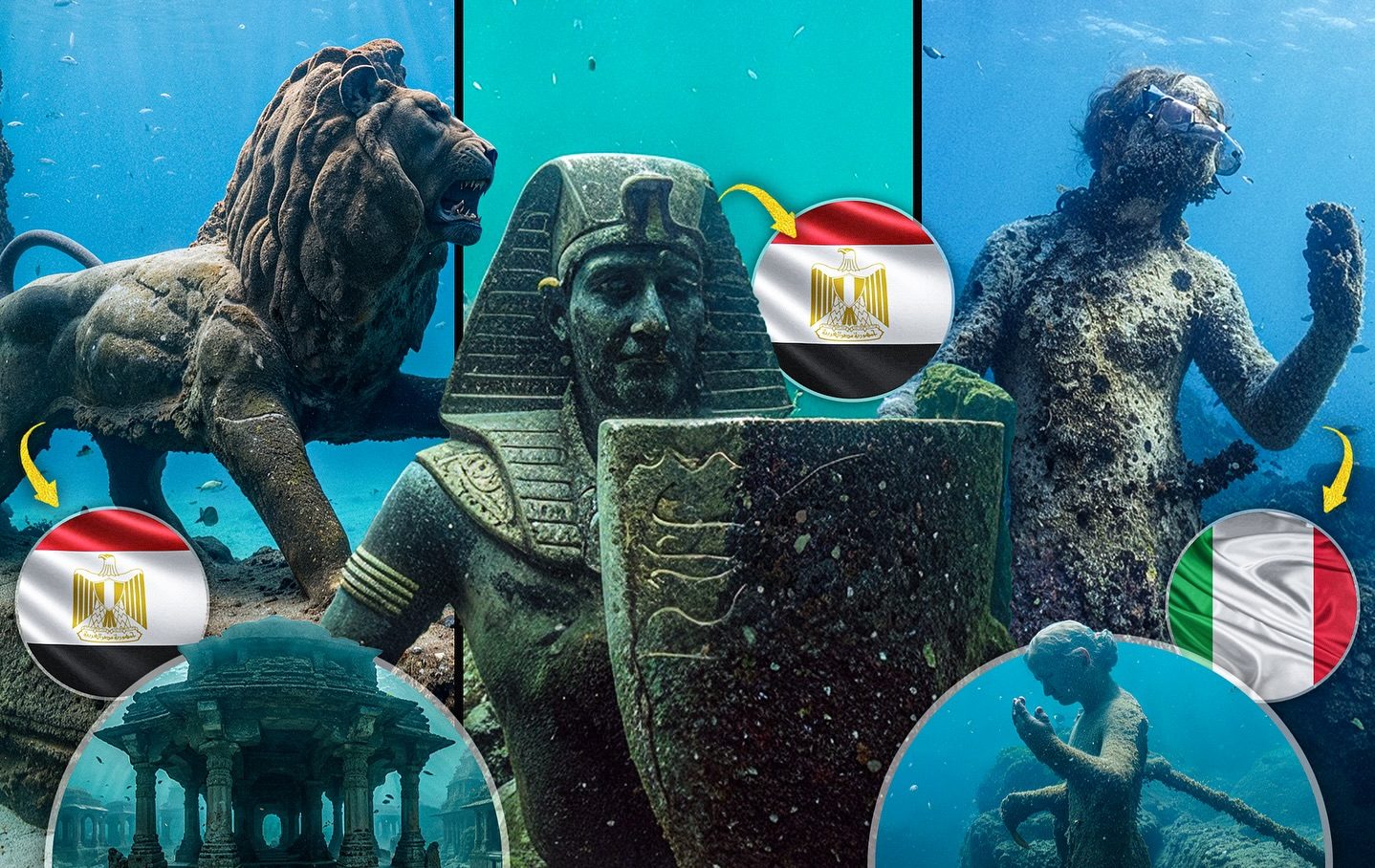Lost Cities That Were Rediscovered Underwater — Ancient Ruins Preserved for Thousands of Years Beneath the Sea
The ocean has always held secrets. For centuries, sailors spoke of kingdoms swallowed by the waves, of temples and markets hidden beneath the surface. These stories sounded like myths, yet science has shown us that many of them were true. Across the world, archaeologists have uncovered entire cities beneath the sea, places where people once lived, traded, and worshiped. Today, these lost cities are more than ruins—they are living museums, showing us how fragile civilization can be when nature changes course.
When divers descend into these silent streets, it feels as though time itself has paused. Statues, houses, and temples stand where they once did thousands of years ago, preserved by the stillness of the water. Let’s journey through some of the most remarkable rediscovered cities beneath the waves.
Dwarka, India
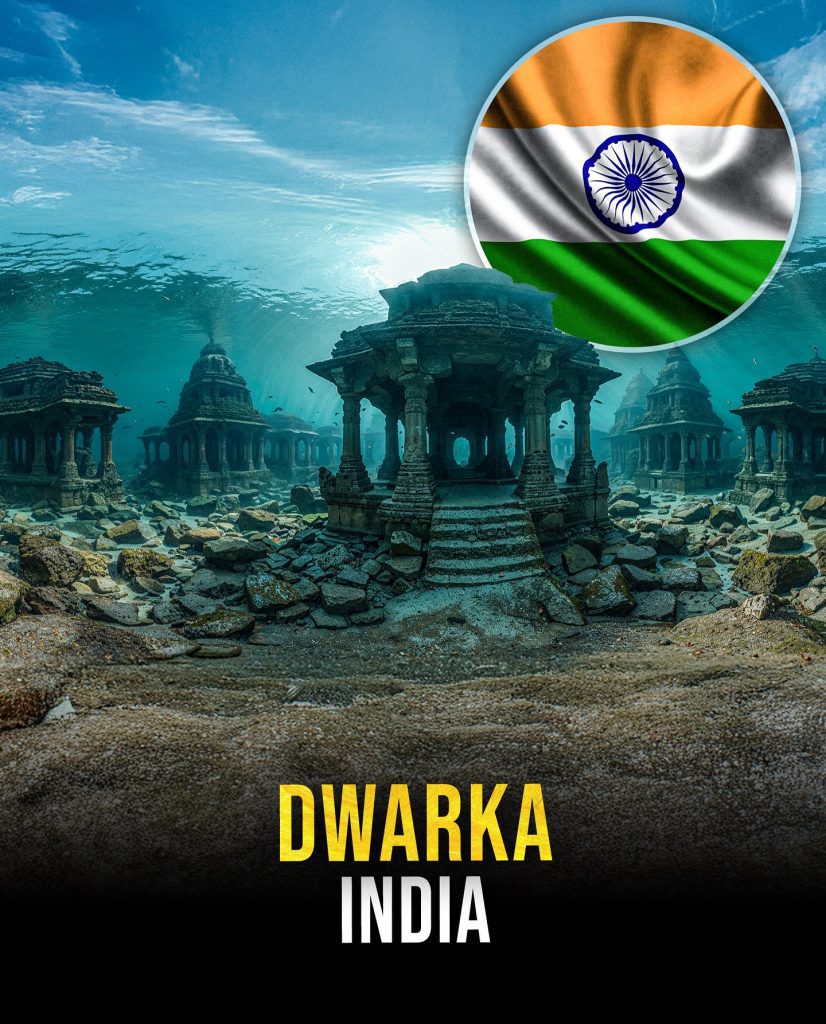
In the Arabian Sea, just off the coast of Gujarat, lies Dwarka, a city that carries immense spiritual and historical significance. Ancient texts spoke of Dwarka as the legendary kingdom of Lord Krishna, but for centuries it was considered more myth than reality. That changed when marine archaeologists found ruins resting beneath the sea floor.
Columns, stone structures, and walls revealed an advanced settlement that may be more than 5,000 years old. The discovery not only gave new weight to ancient Indian scriptures but also reshaped how historians view early civilizations in South Asia. Walking among these ruins underwater, divers see remnants of a thriving city that once bustled with temples, markets, and palaces before it was claimed by the sea.
Pavlopetri, Greece

In the clear waters off the coast of Laconia lies Pavlopetri, believed to be the world’s oldest known submerged city. Dating back around 5,000 years, this Greek city is remarkably well preserved. Streets, buildings, and even courtyards are visible, almost as if the people who once lived there simply vanished overnight.
What makes Pavlopetri extraordinary is its detail. Archaeologists mapped out entire neighborhoods, offering insight into urban life in ancient Greece long before the great classical cities rose. Earthquakes and gradual sinking pushed Pavlopetri under the water, but its story continues to echo. Today, it feels less like a ruin and more like a snapshot of everyday life from thousands of years ago.
Baiae, Italy
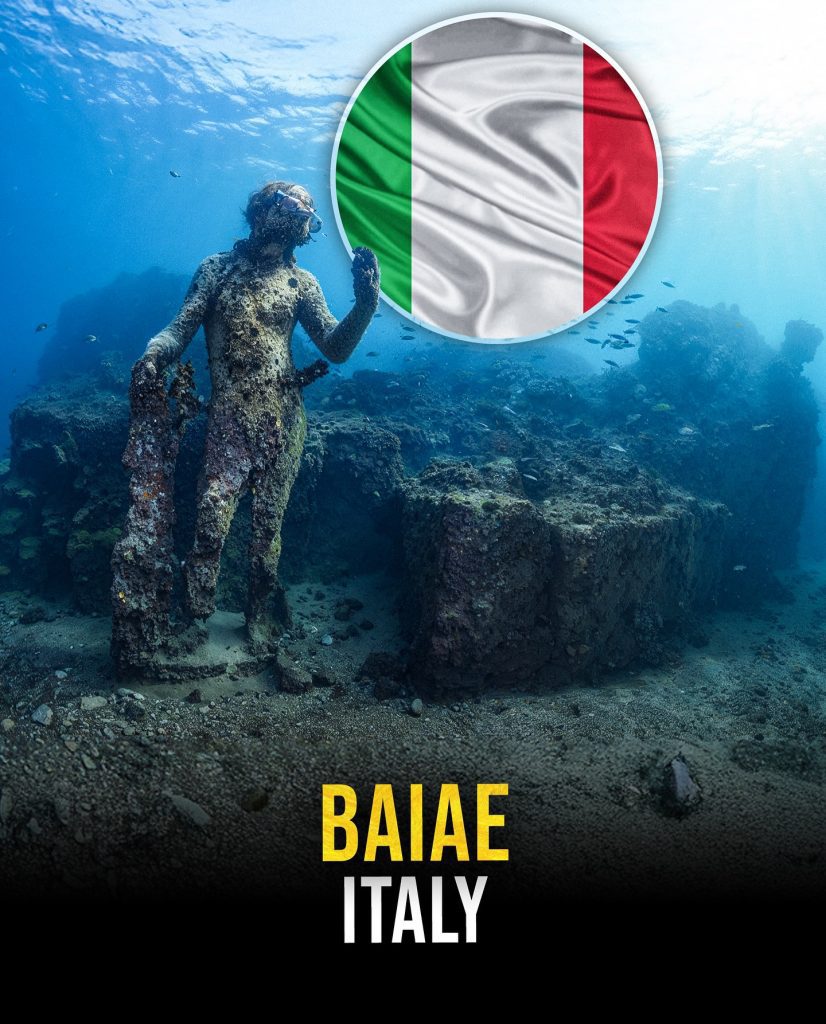
Known in its time as the “Las Vegas of the Roman Empire,” Baiae was a luxurious resort city for Rome’s elite. Wealthy senators, generals, and even emperors came here to enjoy hot springs, lavish villas, and endless entertainment. But over time, volcanic activity caused parts of the city to sink into the Bay of Naples.
Today, the remains of Baiae lie beneath the sea, with mosaics, marble floors, and statues still visible. Divers can swim over the outlines of Roman villas, their walls stretching beneath the sand. Unlike many lost cities, Baiae’s ruins speak of indulgence and excess, reminding us that even the wealthiest societies are vulnerable to nature’s power.
Cleopatra’s Royal Quarter, Egypt
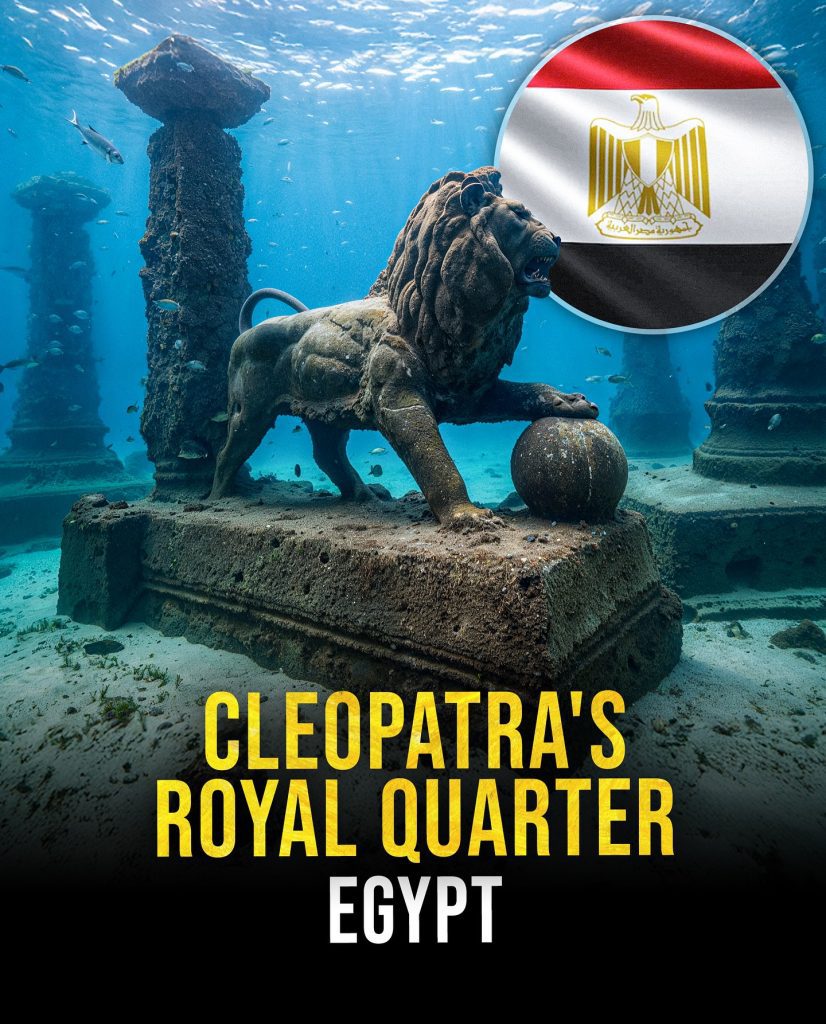
Near Alexandria, beneath the waters of the Mediterranean, lies a city tied to one of history’s most famous figures: Cleopatra. This royal quarter was once the heart of her kingdom, filled with temples, palaces, and harbors that connected Egypt to the world. Earthquakes and tidal waves eventually dragged it below the sea.
Archaeologists have discovered sphinxes, statues of pharaohs, and enormous columns resting in the sand. Some even believe Cleopatra’s palace itself lies within these ruins. To explore this site is to swim into the world of Egypt’s last pharaoh, a reminder of her reign and of how quickly a kingdom can vanish beneath the waves.
Atlit-Yam, Israel

Along Israel’s coast lies Atlit-Yam, a Neolithic village that dates back nearly 9,000 years. This makes it one of the oldest submerged settlements in the world. What makes Atlit-Yam truly remarkable are the details found there—houses, wells, and even human skeletons have been uncovered.
One of its most haunting discoveries is a stone circle believed to have been used for rituals, echoing the purpose of Stonehenge. Scientists believe the city was abandoned when rising sea levels swallowed the land. Atlit-Yam is a powerful reminder that climate change and shifting seas are not new threats—they have been reshaping human history for thousands of years.
Samabaj, Guatemala
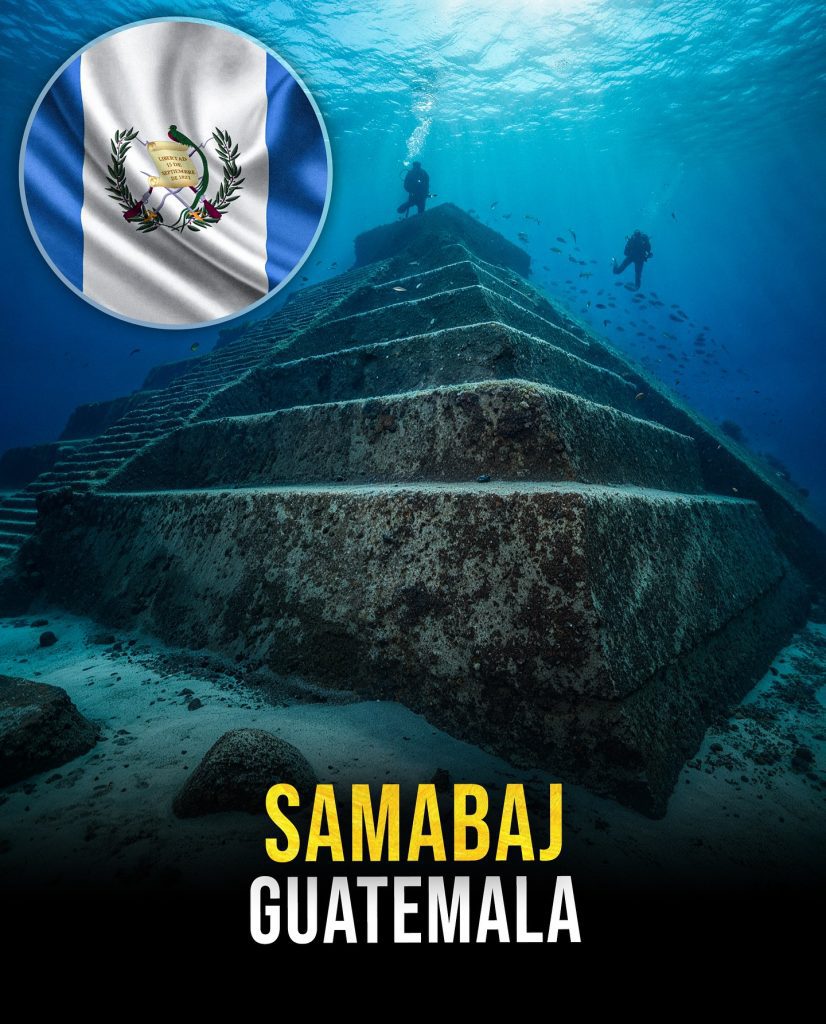
In Lake Atitlán, deep in Guatemala’s highlands, divers discovered Samabaj, a mysterious Mayan site. The ruins include pyramids, ceremonial platforms, and plazas, suggesting it was once an important spiritual center.
Unlike many coastal cities, Samabaj sank beneath the waters of a lake, possibly after volcanic activity caused flooding. For centuries it lay hidden, its stones untouched by waves or storms. When divers found it, they uncovered a sacred place frozen in time, where the ancient Maya once gathered to worship and celebrate.
Port Royal, Jamaica
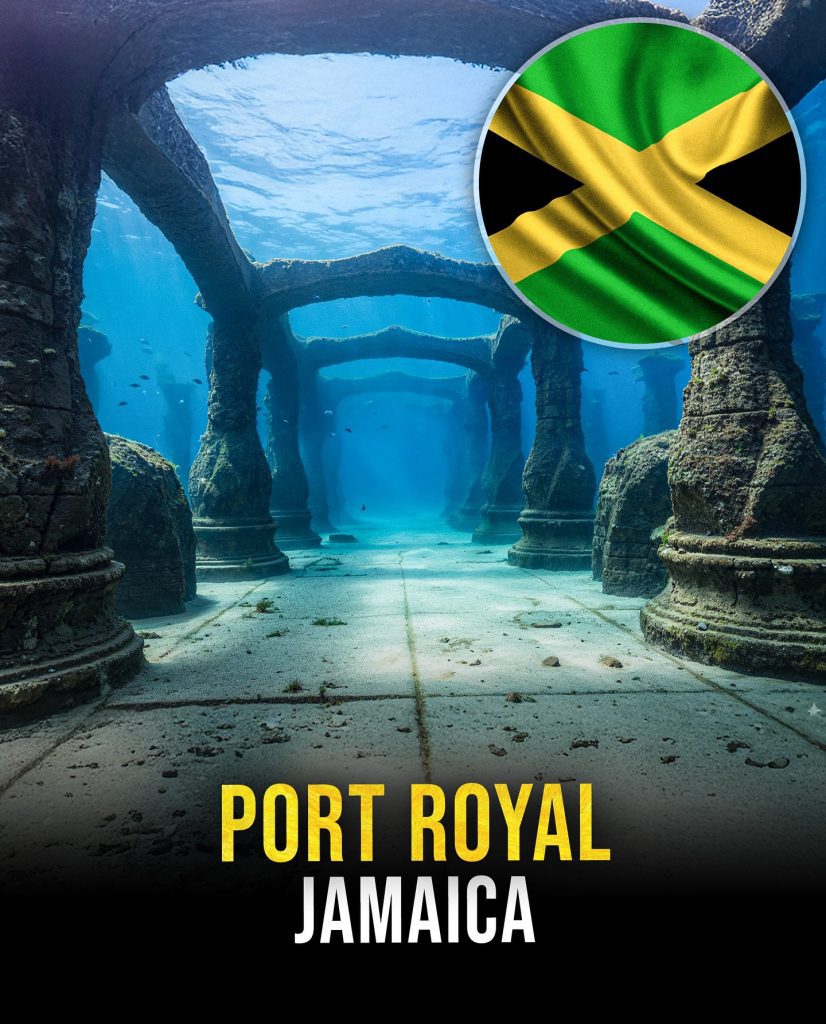
Few lost cities carry the drama of Port Royal, Jamaica. Known in the 17th century as the “wickedest city on Earth,” Port Royal was a pirate haven filled with taverns, gambling dens, and riches from across the Caribbean. That ended in 1692 when a massive earthquake struck, followed by a tsunami that dragged much of the city into the sea.
Today, parts of Port Royal still lie submerged, with streets and buildings preserved in silt. For archaeologists, it’s an invaluable site that shows the sudden destruction of a bustling colonial port. For visitors, it’s a chilling reminder of how fragile life was in an age when natural disasters could erase entire cities in moments.
Canopus, Egypt
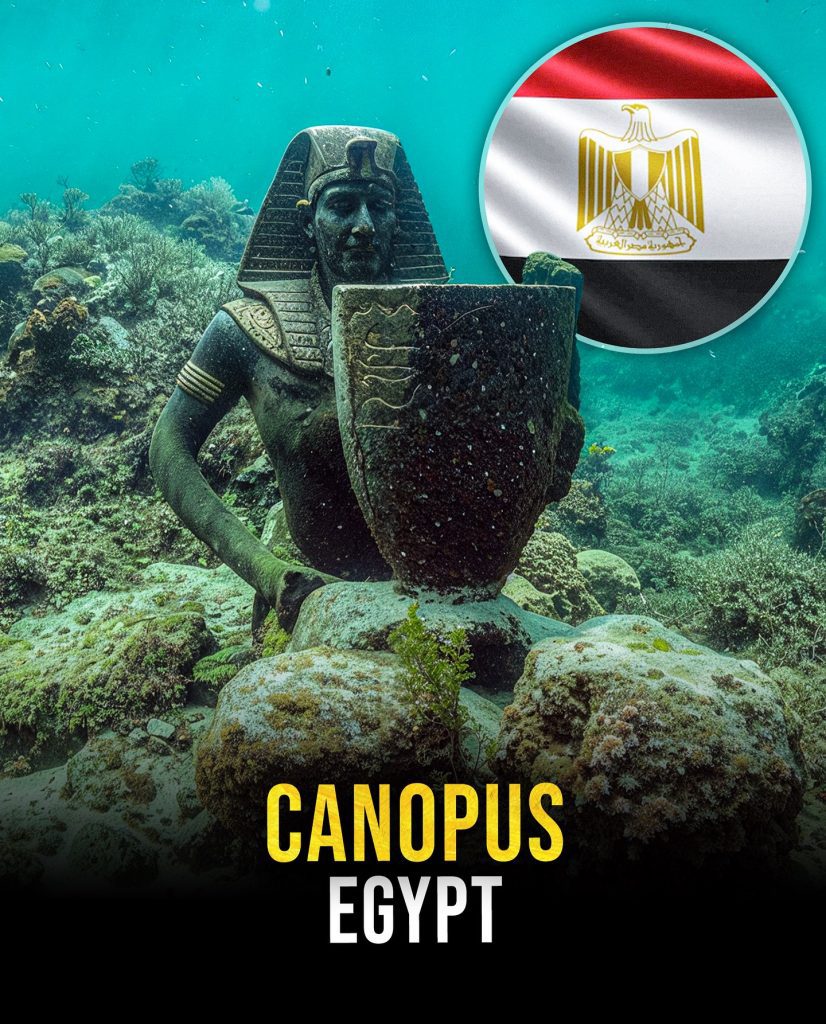
Not far from Alexandria lies Canopus, another great Egyptian city that now rests beneath the Mediterranean. Known in antiquity for its grand temples and healing sanctuaries, Canopus was once a place where pilgrims came to seek cures and give offerings to the gods.
Submerged statues and artifacts show the wealth of this ancient hub. Like nearby Thonis-Heracleion, Canopus was lost due to earthquakes and shifting land. Today, its ruins remain an underwater monument to Egypt’s deep cultural history.
Thonis-Heracleion, Egypt
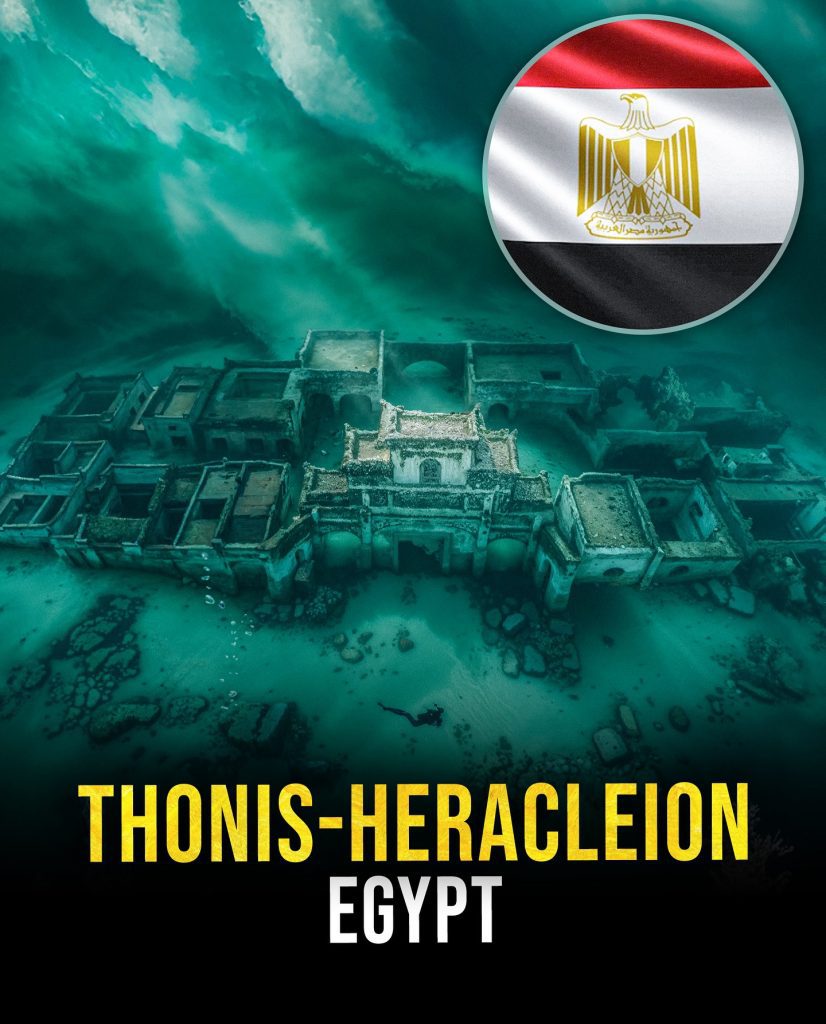
Perhaps one of the most famous rediscovered cities is Thonis-Heracleion. Once a major trading port, it connected Egypt with the Mediterranean world, handling goods, taxes, and travelers. For centuries, it was thought to be only a legend, mentioned in ancient texts but never confirmed.
That changed in 2000, when divers uncovered massive statues, shipwrecks, and entire neighborhoods lying beneath the sea. The scale of the discovery was breathtaking. Temples, canals, and even docks were still intact, showing how vital this city had been before disaster struck. Its rediscovery proved that some myths are grounded in real history, waiting only for the ocean to release them.
Shicheng, China

Known as the “Lion City,” Shicheng in China’s Zhejiang province is one of the most extraordinary underwater finds. Unlike many ancient cities, Shicheng was not lost to natural disaster—it was intentionally flooded in the 1950s to create a reservoir. Yet the result is an underwater time capsule of Chinese architecture.
Pagodas, gates, and intricate stone carvings lie preserved beneath the lake. The water’s low oxygen has kept the city almost perfectly intact, giving divers the eerie feeling of floating through a ghost town. Shicheng is proof that even modern history can become legend when it rests beneath the waves.
Yonaguni, Japan
Off the coast of Japan’s Yonaguni Island lies one of the most mysterious underwater discoveries in the world. Known as the Yonaguni Monument, this massive structure features flat terraces, sharp edges, and geometric shapes that look remarkably man-made. Divers have compared it to a giant stone pyramid, with stair-like formations leading into the depths.
The great debate around Yonaguni is whether it is a natural geological formation or the remains of a lost civilization. Some researchers argue that shifting tectonic plates created the sharp angles, while others believe it could date back more than 10,000 years, pointing to carvings and patterns that suggest human design. Regardless of its origin, Yonaguni captures the imagination like few other underwater sites. Swimming among its walls, you can’t help but feel you are standing in a place where history and myth blur into one.
A Vault Beneath the Sea
From India to China, from Greece to Guatemala, these cities remind us of how fragile human settlements are against the forces of nature. Earthquakes, floods, and rising seas turned once-bustling ports into silent ruins. But in their silence, they carry voices from the past.
Each rediscovery is more than an archaeological find—it is a connection to people who lived, dreamed, and built their lives long ago. The sea did not erase them. Instead, it preserved their stories, waiting for us to listen.

